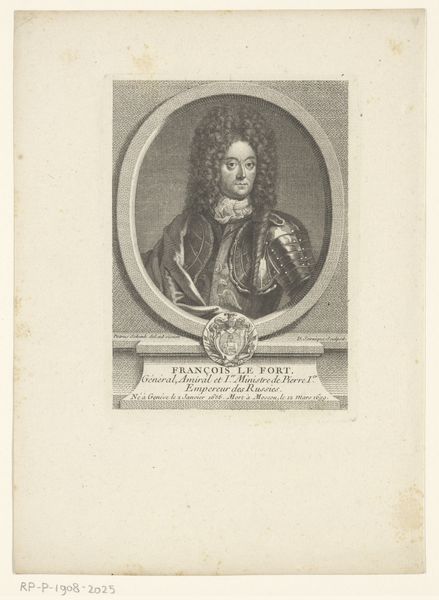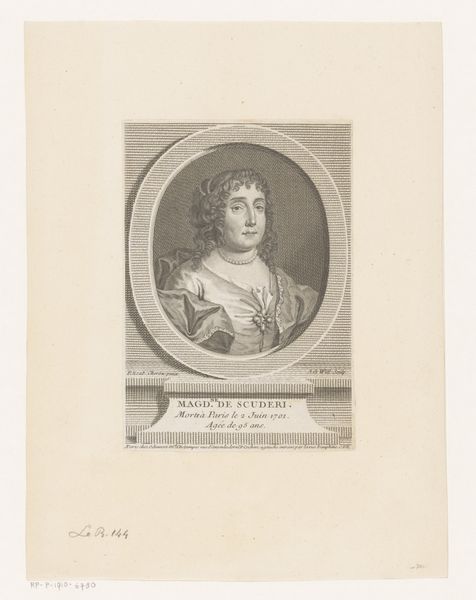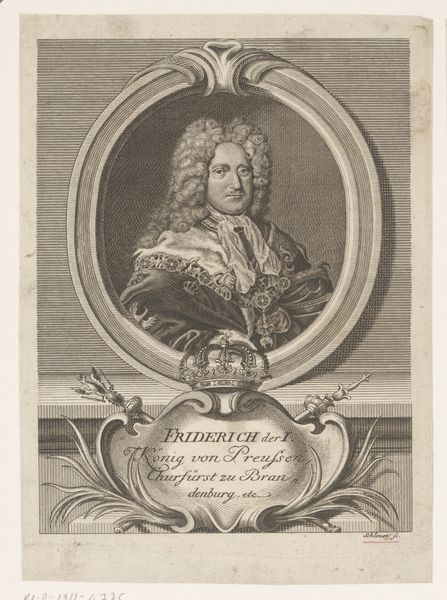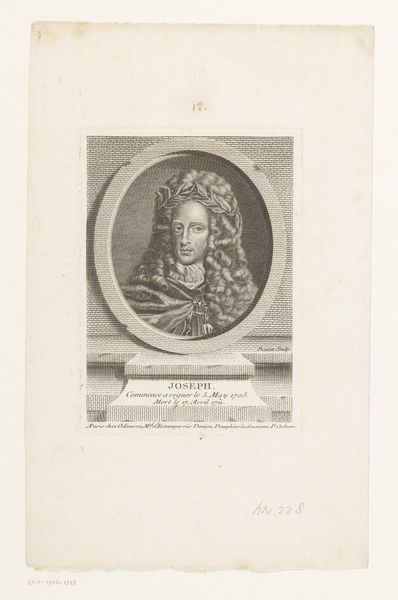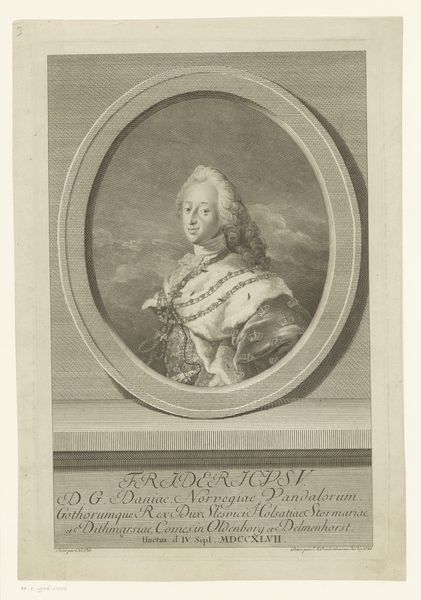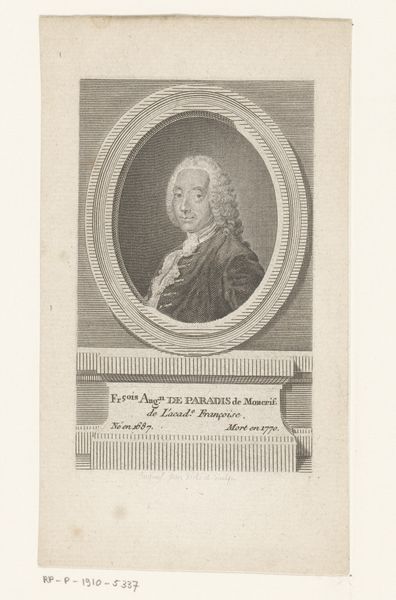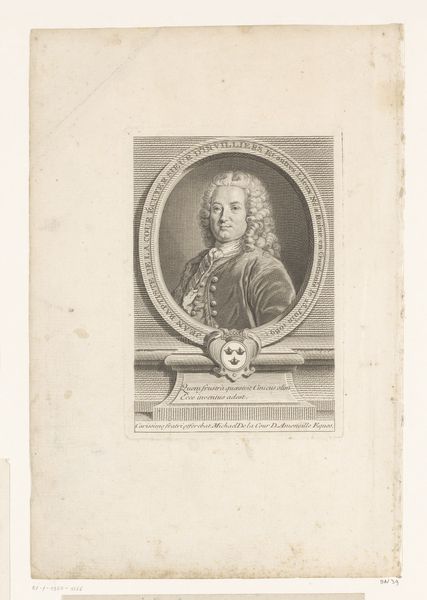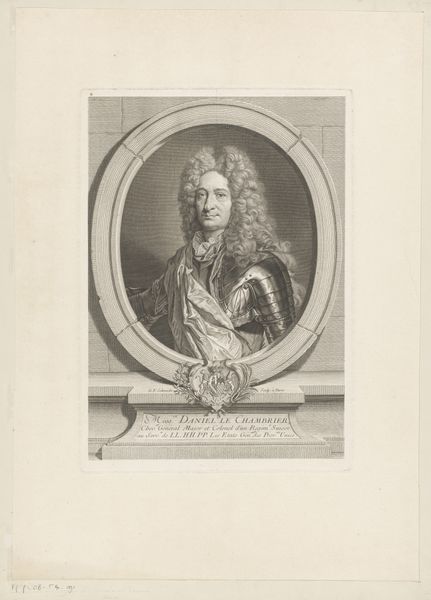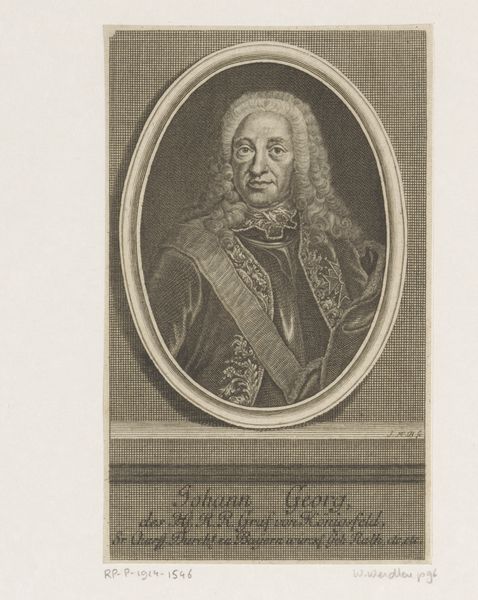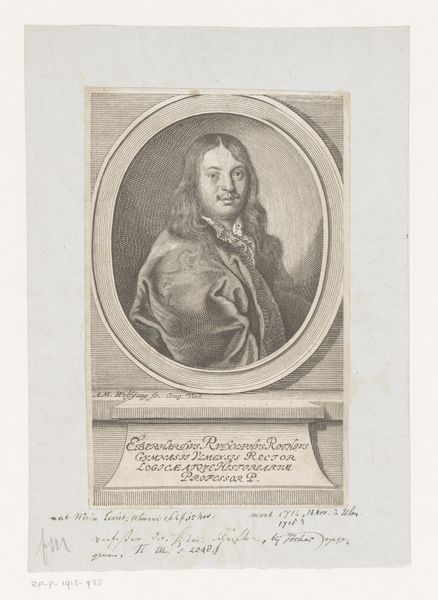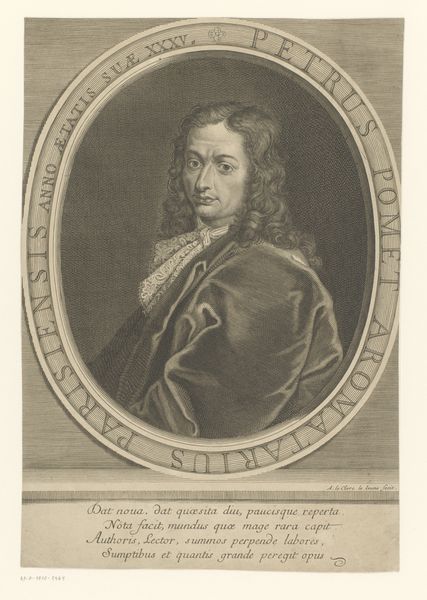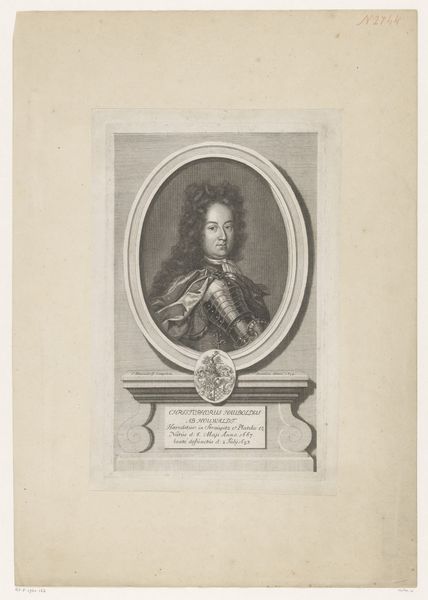
Dimensions: height 265 mm, width 185 mm
Copyright: Rijks Museum: Open Domain
Curator: Immediately striking! The subtle gray tones give the sitter an ethereal, almost ghostly presence. Editor: Indeed. We’re looking at "Portret van Charles Louis Auguste Fouquet, duc de Belle-Isle," an engraving by Carlo Domenico Melini, created sometime between 1745 and 1795. The Baroque style is certainly present in the composition, although subdued. Curator: Subdued is right. But the formal structure, the arrangement within the oval frame, the meticulously rendered textures—all speak volumes about status and the conventions surrounding portraiture during that era. Look at the craft: How the engraving translates the luxury of fabric, embroidery, and the softness of the wig. Editor: Precisely! I think considering the labour behind the engraving also lends insight here. This image was reproducible and disseminate, creating many versions for political and social visibility. The material object acted as propaganda and commodity rolled into one. Curator: A fascinating point. Considering the broader context of 18th-century aristocratic portraiture as a means of constructing and solidifying social hierarchy is so crucial. One sees similar formal techniques used across painted portraits intended for private display versus the wide audience this would have achieved. Editor: Yet Melini has still produced something compellingly emotive. The detail in the gaze, the slightly pursed lips, convey such calculated poise and maybe the faintest hint of arrogance. He is carefully manipulating how he’s represented, what class status he is projecting out to those in his social orbit and the world at large. Curator: Or that is the persona that the craft and materials seek to solidify... the visual representation of how they must act based on their economic position. Perhaps this analysis provides an important context for its historical significance and enduring visual appeal. Editor: Quite. The act of repeated visuality shaping and molding even those who view it in later years. Curator: It certainly provides an alternative interpretive lens and speaks to the power dynamics that shaped its creation and continues to resonate today.
Comments
No comments
Be the first to comment and join the conversation on the ultimate creative platform.

